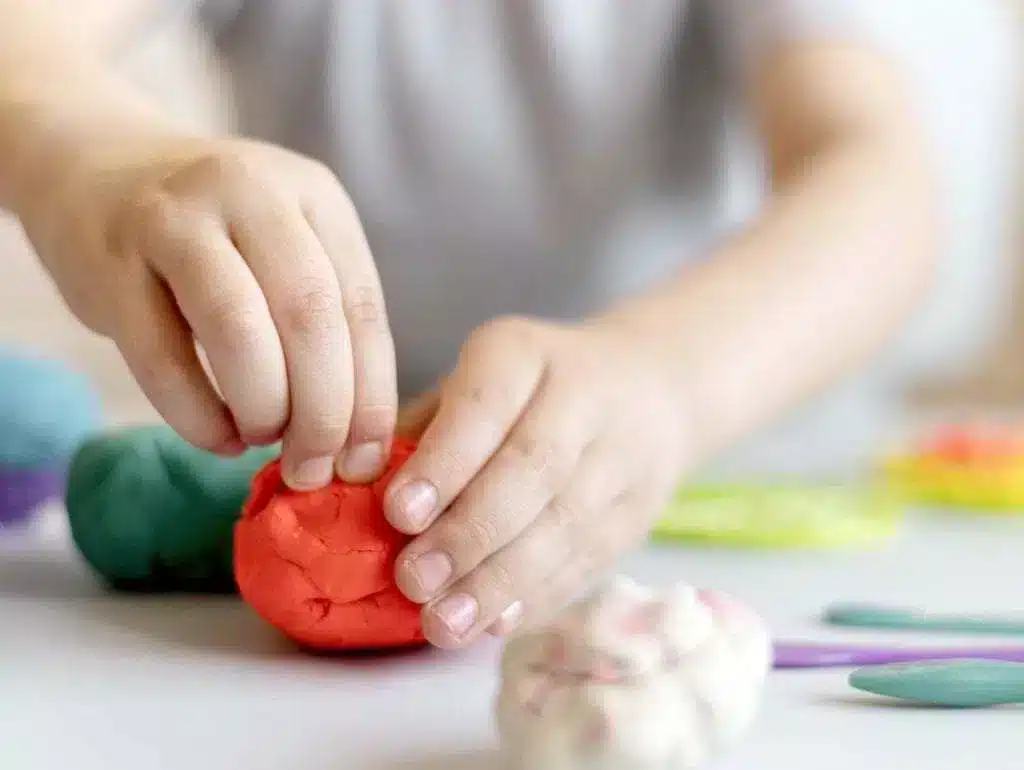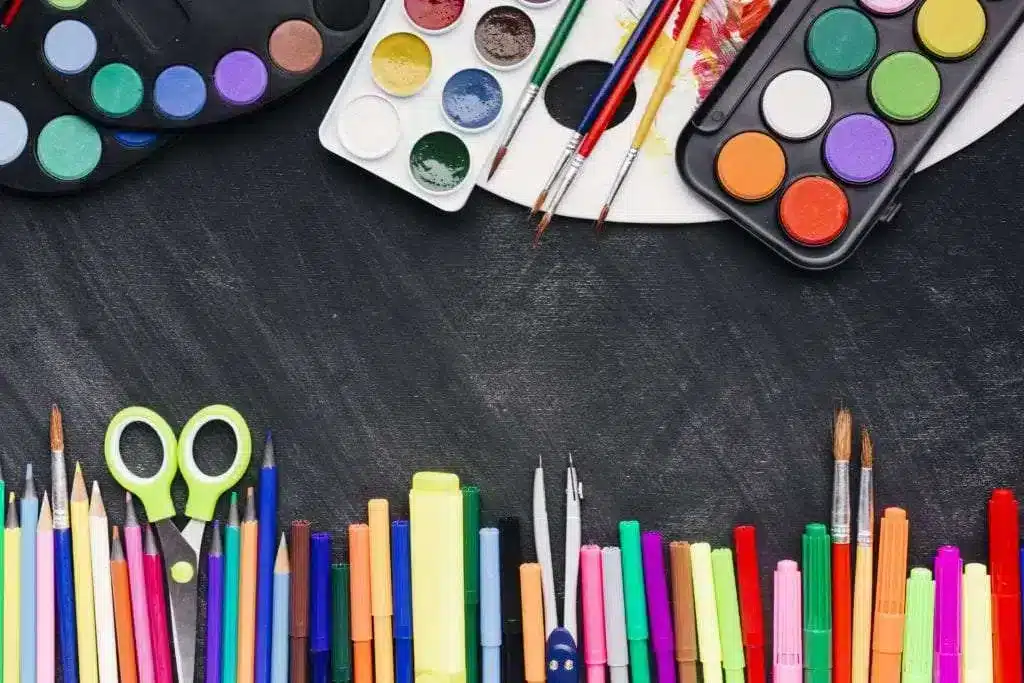EXPRESSIVE ARTS
Expressive arts offers confidence and freedom that the child needs to express themselves. Children feel comfortable when they play, draw and create. By incorporating play techniques into the therapeutic process, the therapist can establish the relationship more easily. Children have limited cognitive and verbal skills which prevent them from understanding and communicating their feelings due to their abstract and complex nature.
USING ART AS PART OF THE THERAPY PROCESS
Utilizing images in the form of art can be a powerful addition to the therapy process.
One of the therapist’s main goals is to help the child identify, label and understand emotions, providing the tools that allow them to get in touch with their emotional experience and gain greater mastery of it.

At the beginning of therapy, children are often defensive and may refuse to talk about their difficult, embarrassing or uncomfortable emotions. It is the therapist’s task to devise a creative way to lower the child’s defenses and offer a safe environment where they can recognize, express and process their emotions.
Expressive arts use various artistic techniques and materials (i.e. collage, painting, sculpture, writing, clay and plasticine modeling, book creation) to facilitate the child’s development and healing. It is not simply a question of drawing well or creating a “nice” art work, but it is a process of self-discovery through any form of art that comes from an emotional experience.
Most children enjoy the use and manipulation of art materials, they often find it relaxing and simply fun. The act of making, creating with one’s hands is certainly less threatening than just talking about an upsetting emotions, thoughts or events. For the child, it represents an expressive experience that allows viewing of themselves in new ways, offers potential resolutions to conflicts and activates resources from within. The addition of arts materials during the sessions opens new ways for expression. The familiar and playful nature of these materials helps to facilitate the child’s engagement with therapy, while at the same allows them to relax their defenses.

For example, the easy malleability of the play-dough and its transformational properties facilitates a child’s ability to play with and give a form to significant issues while maintaining “control” over the material. The process of working with the play- dough and its shapeable form may serve as a helpful metaphor for change. Also, children are often faced with situations in which they feel helpless.
Making drawings about these situations or representing them can help restore a sense of power, control and achievement.
There may be several benefits to using art within the session when working with children. One of the main benefits is to facilitate the body’s relaxation response. For example, drawing facilitates a child’s verbal account of emotionally laden events. This is achieved by reducing anxiety, helping the child feel comfortable in the therapeutic environment, increasing memory retrieval and prompting the child to provide the clinician with more details than they would in a primarily verbal interview (Malchiodi, 2003).
EXPRESSIVE ARTS AND CBPT
In CBPT, CBT techniques are integrated with expressive arts in order to facilitate contact with the emotional-sensory states, their acceptance and modulation through the sense of self and self-efficacy reinforcement.
The expressive arts are a valuable tool to get in touch with one’s emotional experience, encourage self-expression, develop coping skills and control, promote self-esteem and self-awareness, facilitate self-control, reduce suffering and empower self-confidence.
In general, more structured art materials (pencils, markers, etc.) are effective for the verbal tasks of CBT because they help to represent one’s thoughts. Less structured materials (clay, watercolors, etc.) are effective for the physical tasks of CBT like supporting deep breathing and relaxation.
Artistic and expressive activities give a concrete and tangible form to the child’s experiences.

When cognitive-behavioral techniques and expressive arts are combined, the therapist has the possibility through verbal modalities to explore the child’s thinking, identify his maladaptive thoughts and start a modeling process aimed at building more adaptive thoughts and behaviors.
Expressive arts are used to explore the child’s imagination in terms of pictorial representations of cognitive distortions which are then subjected to the same evaluation and modification of thought processes. Therefore, if images are an essential element of cognition, using drawing or other visual means, offers a visual image to our internal cognitive thoughts (Rosal, 2001).
Rosal (2001) states that art therapy focuses on the subject’s emotional components in order to understand their cognitive processes system. Rosal emphasizes how art facilitates the acquisition of new ideas and learning. During the creative process, it is possible to recover one’s cognitive maps. When an individual creates an image related to a life situation or a complex event, this creates an opportunity for problem-solving, by developing alternative solutions for the creation of the image of the future. Therefore, creating images can help an individual to discover their inner language, their own personal construction system. When both the external and internal worlds are connected through image creation, behavioral changes can be facilitated.

Through CBPT, children explore their thoughts and feelings. The creation of artwork as part of the therapeutic intervention does seems to be less intimidating and more relatable if it includes art because art is a developmentally comfortable language for most children and adolescents (Malchiodi, 2003).
The process of creating art is sensorimotor and relates to Piaget’s sensorimotor stage itself when the infant develops an understanding of the world by coordinating their sensory experiences with their physical actions.
Utilizing art also offers alternate ways to express thoughts and emotions by offering visual and tactile outlets. Art is a body-based activity that could serve as a significant window of expression when words fail (Hinz, 2006). Utilizing art can help children who struggle with the inability to express thoughts and emotions using words. Depending on the developmental level of the child, there may be difficulty in verbalizing feelings due to a lack of abstract thinking. Art can provide a language or a vehicle for expression when it is difficult to use verbal language to describe or identify feelings.
The artwork created in the session becomes something that represents the young person’s thoughts/feelings that is visible and tangible, unlike emotion. The art can serve as a material that can be processed and reflected upon with the therapist in a therapeutic environment.


DOWNLOAD OUR FREE E-BOOK OF CBPT
Thank you for signing up! Check your email for download your free E-book and enjoy it. If you don't see an email from info@cbpt.org check the spam!